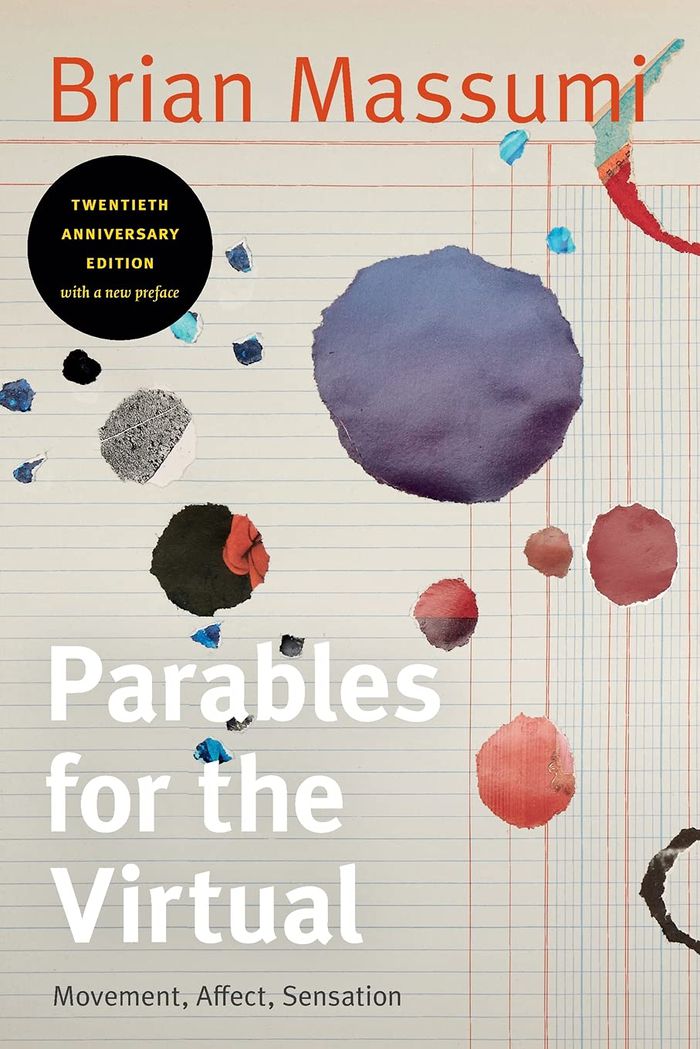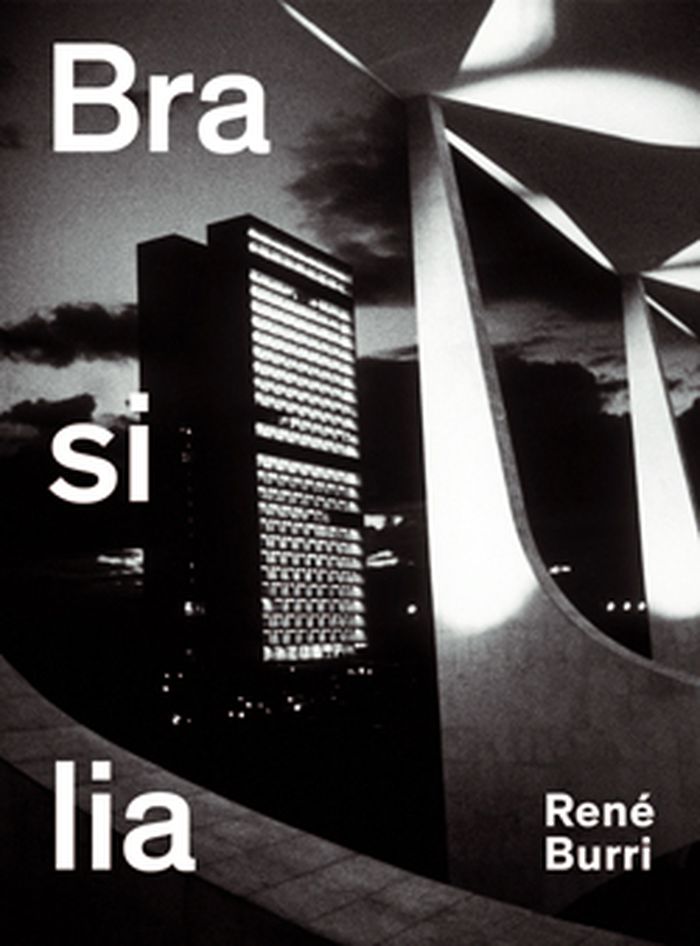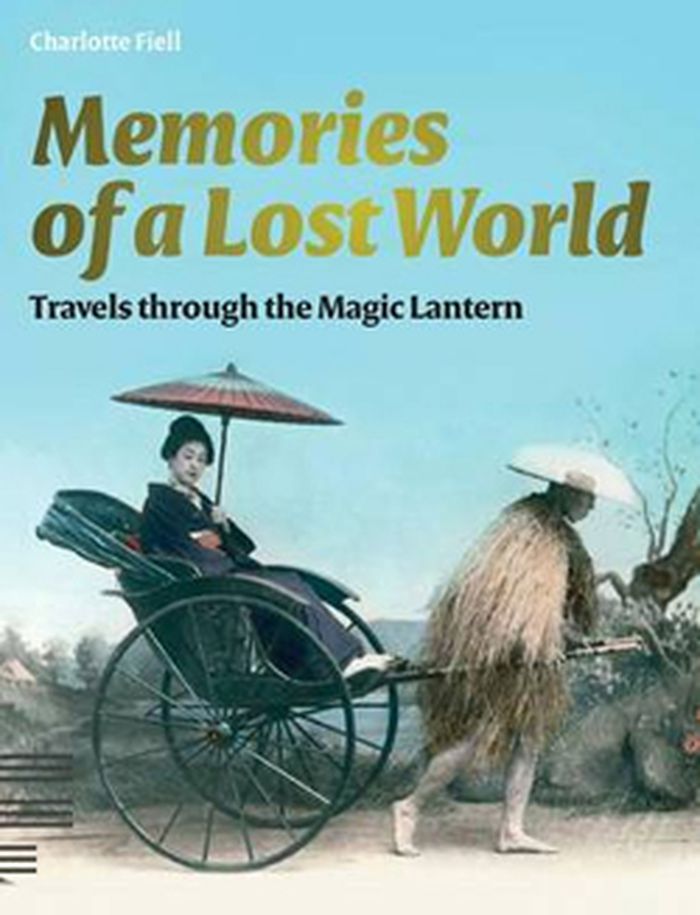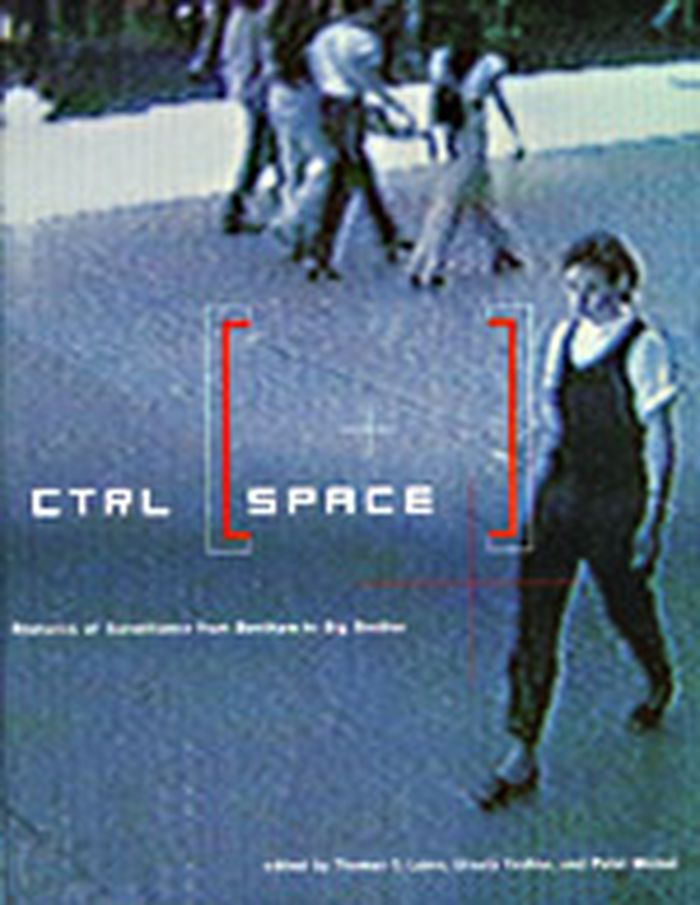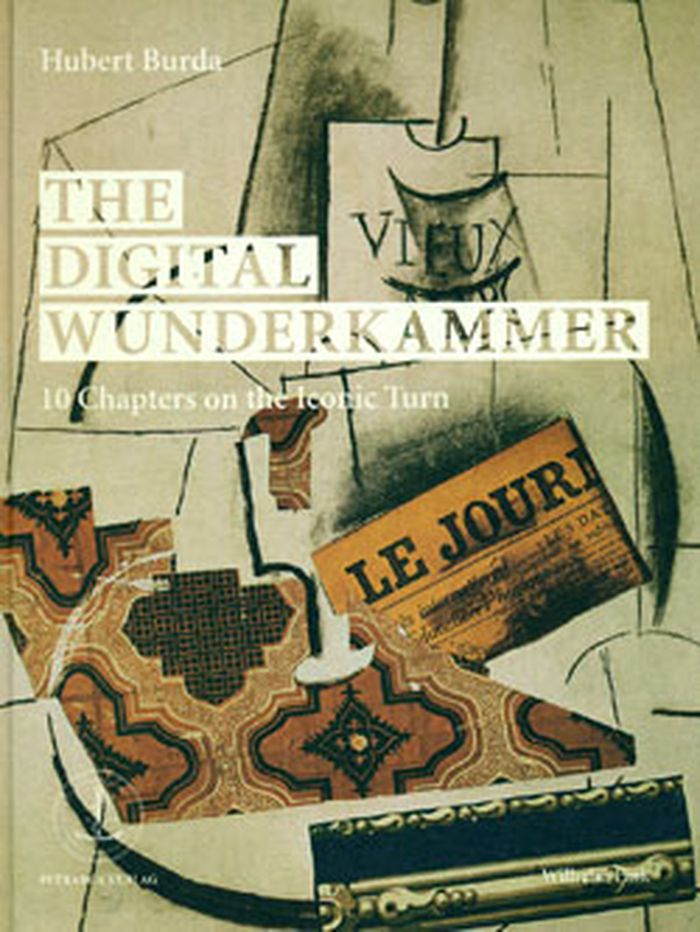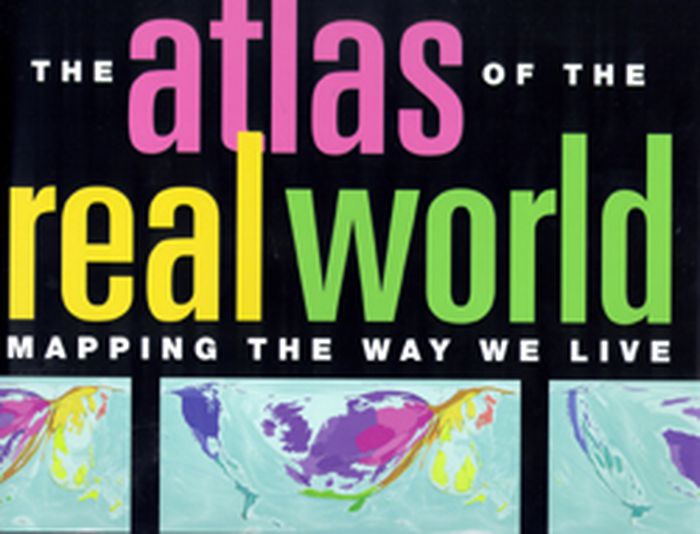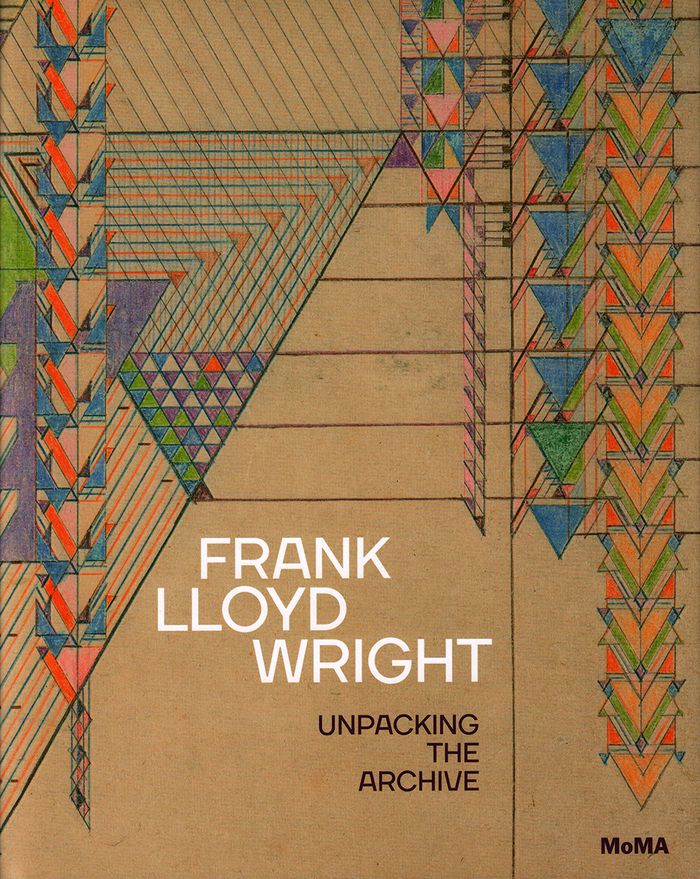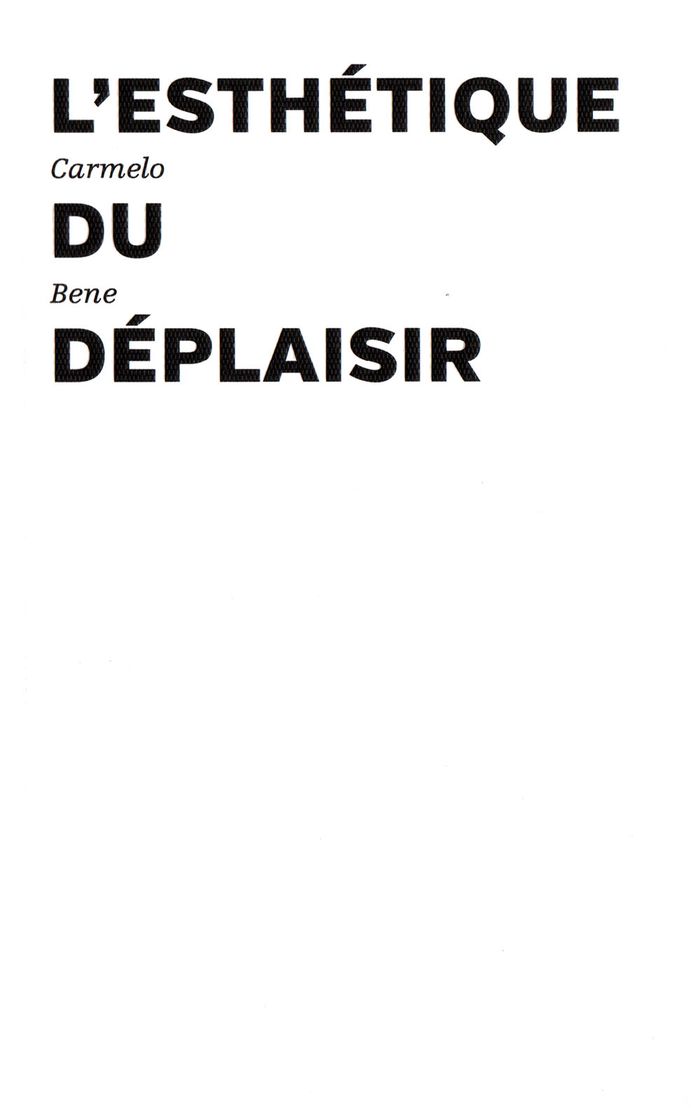$38.95
(available to order)
Summary:
Since its publication twenty years ago, Brian Massumi's pioneering ''Parables for the virtual'' has become an essential text for interdisciplinary scholars across the humanities. Massumi views the body and media such as television, film, and the internet as cultural formations that operate on multiple registers of sensation. Renewing and assessing William James's radical(...)
Parables for the virtual: movement, affect, sensation
Actions:
Price:
$38.95
(available to order)
Summary:
Since its publication twenty years ago, Brian Massumi's pioneering ''Parables for the virtual'' has become an essential text for interdisciplinary scholars across the humanities. Massumi views the body and media such as television, film, and the internet as cultural formations that operate on multiple registers of sensation. Renewing and assessing William James's radical empiricism and Henri Bergson's philosophy of perception through the filter of the postwar French philosophy of Deleuze, Guattari, and Foucault, Massumi links a cultural logic of variation to questions of movement, affect, and sensation. Replacing the traditional opposition of literal and figural with distinctions between stasis and motion and between actual and virtual, Massumi tackles related theoretical issues by applying them to cultural mediums as diverse as architecture, body art, the digital art of Stelarc, and Ronald Reagan's acting career. The result is an intriguing combination of cultural theory, science, and philosophy that asserts itself in a crystalline and multifaceted argument. This twentieth anniversary edition includes a new preface in which Massumi situates the book in relation to developments since its publication and outlines the evolution of its main concepts. It also includes two short texts, "Keywords for Affect" and "Missed Conceptions about Affect," in which Massumi explicates his approach to affect in ways that emphasize the book's political and philosophical stakes.
Critical Theory
$109.95
(available to order)
Summary:
2010 marked the 50th anniversary of Brazil's capital Brasilia. Architects Lucio Costa and Oscar Niemeyer designed what has become one of the most studied urban planning project. Niemeyer's Cathedral, his building for the National Congress and the city's 707-ft television tower are icons of modern architecture. The entire city, marked by its cross-shaped layout and vast(...)
René Burri, Brasilia: photographs 1960-1993
Actions:
Price:
$109.95
(available to order)
Summary:
2010 marked the 50th anniversary of Brazil's capital Brasilia. Architects Lucio Costa and Oscar Niemeyer designed what has become one of the most studied urban planning project. Niemeyer's Cathedral, his building for the National Congress and the city's 707-ft television tower are icons of modern architecture. The entire city, marked by its cross-shaped layout and vast open spaces, was named a UNESCO World Heritage site in 1987. The author of this publication visited Brasilia's vast building sites for the first time in 1958. He returned many times over the years, documenting with his camera growth and further development of this built Utopia. Besides documenting the buildings in various stages of completion, Burri took portraits of Niemeyer and his workers and photographed Brasilia's street scenes and people and aerial views of the city's first slums. His images capture the strong sense of a new era and a vibrant atmosphere of hard work and strain; they reflect the huge dimensions of the landscape and the great scale of this project and its ambition to design and build a new capital. This book presents a large selection from hundreds of colour and black-and-white photographs, the majority of them published in this book for the first time.
Photography monographs
$54.95
(available to order)
Summary:
An early version of the slide projector and an immediate predecessor of narrative cinema, the magic lantern provided the lens through which late-nineteenth century Europe and America viewed and imagined the world. Magic lantern slide shows were a popular, entertaining and educational way for people to learn about the world beyond their own horizons, and from Cairo to(...)
Memories of a lost world : travels through the magic lantern
Actions:
Price:
$54.95
(available to order)
Summary:
An early version of the slide projector and an immediate predecessor of narrative cinema, the magic lantern provided the lens through which late-nineteenth century Europe and America viewed and imagined the world. Magic lantern slide shows were a popular, entertaining and educational way for people to learn about the world beyond their own horizons, and from Cairo to Delhi to Adelaide and Cape Town, intrepid European and American photographers traveled to all corners of the world to document its peoples and customs. Now, for the first time, images of original magic lantern slides have been brought together in a single publication. Memories of a Lost World: Travels through the Magic Latern takes the reader back to a pre-globalised world in which regional customs and national cultures were as distinctive as they were diverse. From the bustling streets of Victorian London and the ruins of ancient Egypt to the temples of Japan and the tribesmen of New Guinea, Memories of a Lost World explores the world through a captivating collection of over 800 magic lantern slide images. This volume is not only an important source of primary historical information, but also conveys something of what the world was like before the advent of television and mass travel.
Transportation, Tourism, Migration
books
$57.50
(available to order)
Summary:
The last thirty years of the twentieth century saw the birth of more than six hundred art museums in the United States alone, with equal proliferation in much of Europe. Such projects as Frank Gehry's Guggenheim in Bilbao and Richard Meier's Getty Center in Los Angeles have dominated television newscasts and newspaper headlines worldwide. The success or failure of these(...)
Museums and Universal Exhibitions
October 2006, New York
Towards a new museum, expanded edition
Actions:
Price:
$57.50
(available to order)
Summary:
The last thirty years of the twentieth century saw the birth of more than six hundred art museums in the United States alone, with equal proliferation in much of Europe. Such projects as Frank Gehry's Guggenheim in Bilbao and Richard Meier's Getty Center in Los Angeles have dominated television newscasts and newspaper headlines worldwide. The success or failure of these new museums, in aesthetic, educational and financial terms, results from a variety of factors, none more important than their architecture. In this unique investigation, architectural historian Victoria Newhouse challenges many hitherto accepted premises of museum design. She demonstrates that new museums are often based on old concepts that no longer apply. This unvarnished analysis is informed by interviews with museum directors and curators, collectors, artists and the architects themselves. Newhouse divides her discussion according to the dominant characteristics of the museums : private collections, single-artist museums, sacred spaces, artists' self-created sites, and museum additions. In addition to the Getty and the Guggenheim Bilbao, the author discusses the Menil Collection in Houston, Texas; the Andy Warhol Museum in Pittsburgh; the Kiasma Museum for Contemporary Art in Helsinki; Donald Judd's Chinati Foundation in Marfa, Texas; the Metropolitan Museum of Art and the Museum of Modern Art in New York; the Grand Louvre and the Centre Georges Pompidou in Paris; and many more.
books
October 2006, New York
Museums and Universal Exhibitions
$63.95
(available to order)
Summary:
This book investigates the state of panoptic art at a time when issues of security and civil liberties are on many people’s minds. Traditional imaging and tracking systems have given way to infinitely more powerful “dataveillance” technologies, as an evolving arsenal of surrogate eyes and ears in our society shifts its focus from military to domestic space. Taking as its(...)
Contemporary Art Monographs
March 2002, Karlsruhe, Germany / Cambridge, Massachusett
CTRL (space) : rhetorics of surveillance from Bentham to big brother
Actions:
Price:
$63.95
(available to order)
Summary:
This book investigates the state of panoptic art at a time when issues of security and civil liberties are on many people’s minds. Traditional imaging and tracking systems have given way to infinitely more powerful “dataveillance” technologies, as an evolving arsenal of surrogate eyes and ears in our society shifts its focus from military to domestic space. Taking as its point of departure an architectural drawing by Jeremy Bentham that became the model for an entire social regime, CTRL [SPACE] looks at the shifting relationships between design and power, imaging and oppression, from the eighteenth to the twenty-first centuries. From the photographs taken with hidden cameras by Walker Evans and Paul Strand in the early twentieth century to the appropriation of military satellite technology by Marko Peljhan a hundred years later, the works of a wide range of artists have explored the dynamics of watching and being watched. The artists whose panoptical preoccupations are featured include, among others, Sophie Calle, Diller + Scofidio, Dan Graham, Pierre Huyghe, Michael Klier, Rem Koolhaas, Bruce Nauman, Yoko Ono, Thomas Ruff, Julia Scher, Andy Warhol, and Peter Weibel. This book, along with the exhibition it accompanies, is the first state-of-the-art survey of panopticism--in digital culture, architecture, television, video, cinema, painting, photography, conceptual art, installation work, robotics, and satellite imaging.
Contemporary Art Monographs
$45.00
(available to order)
Summary:
As digital technology advances at breakneck speed, images are circulating quicker than ever before. But what is the status of the image in the digital era? In this publication, art historian Hubert Burda (born 1940) examines the "iconic turn" in ten themed chapters and conversations with leading cultural theorists. In the first chapter, "The View Through the Window,"(...)
The digital wunderkammer : 10 chapters on the iconic turn
Actions:
Price:
$45.00
(available to order)
Summary:
As digital technology advances at breakneck speed, images are circulating quicker than ever before. But what is the status of the image in the digital era? In this publication, art historian Hubert Burda (born 1940) examines the "iconic turn" in ten themed chapters and conversations with leading cultural theorists. In the first chapter, "The View Through the Window," Burda traces the connection between perspectival painting and the television, demonstrating in the second chapter how the image requires a frame, which in turn requires a material vehicle - the topic of the third chapter - that in our era has become a non-material vehicle with its own formal parameters. In the fourth chapter, "The Mobile Image," Burda shows how images have always been linked to portability, but now migrate to an unprecedented degree, so that anyone with a personal device can globally disseminate, say, footage from a concert via Youtube. A discussion of the capacity of individual images to placate or ennervate leads to a seventh chapter on the appetite for the Sublime and the rhetoric and representation of power throughout art history. Following a discussion of the democratization of celebrity culture, Burda proposes that the Google search box is perhaps the most interesting "interface" of our times, analogous to the seventeenth-century cabinet of curiosities (or wunderkammer). Conversations with Friedrich Kittler, Peter Sloterdijk, Bazon Brock, Horst Bredekamp and Hans Belting further extend this imaginative debate on the "iconic turn."
Epistemology
$63.00
(available to order)
Summary:
366 cartograms cover a vast array of subjects, providing a definitive reference on how regions and countries compare in resources, production, consumption, and more. Advances in technology have made widespread and detailed data gathering easier, resulting in a deluge of statistics on subjects as diverse as literacy rates, military spending, overweight children,(...)
Architectural Drawing
October 2008, New York
The atlas of the real world: mapping the way we live
Actions:
Price:
$63.00
(available to order)
Summary:
366 cartograms cover a vast array of subjects, providing a definitive reference on how regions and countries compare in resources, production, consumption, and more. Advances in technology have made widespread and detailed data gathering easier, resulting in a deluge of statistics on subjects as diverse as literacy rates, military spending, overweight children, television viewing figures, and endangered species. But how do we represent and compare data from one part of the world to another in a useful way? Here, sophisticated software combined with comprehensive analysis of every aspect of life represents the world as it really is. Digitally modified maps depict the areas and countries of the world not by their physical size but by their demographic importance on a vast range of topics. The rainforests of South America, with thirty percent of the world's fresh water, make the continent balloon in an analysis of water resources, whereas Kuwait, dependent on desalinated seawater, disappears from the map. Fuel use, alcohol consumption, population, malaria: here are hundreds of key indicators to the way we live. This innovative and exceptionally accessible reference work will be an indispensable tool for journalists, economists, marketers, politicians, financiers, environmentalists, and scholars. Its cartograms are augmented by graphs, tables, and full commentaries. 366 color maps. About the Author Daniel Dorling is Professor of Human Geography at the University of Sheffield, England. Mark Newman is Assistant Professor of Physics and Complex Systems at the University of Michigan. Anna Barford is a Research Associate at the University of Sheffield.
Architectural Drawing
$85.00
(available in store)
Summary:
Published for a major exhibition at The Museum of Modern Art, this catalog reveals new perspectives on the work of Frank Lloyd Wright, a designer so prolific and familiar as to nearly preclude critical reexamination. Structured as a series of inquiries into the Frank Lloyd Wright Foundation Archives at Taliesin West, Arizona (recently acquired by MoMA and Avery(...)
Frank Lloyd Wright: unpacking the archive
Actions:
Price:
$85.00
(available in store)
Summary:
Published for a major exhibition at The Museum of Modern Art, this catalog reveals new perspectives on the work of Frank Lloyd Wright, a designer so prolific and familiar as to nearly preclude critical reexamination. Structured as a series of inquiries into the Frank Lloyd Wright Foundation Archives at Taliesin West, Arizona (recently acquired by MoMA and Avery Architectural & Fine Arts Library, Columbia University), the book is a collection of scholarly explorations rather than an attempt to construct a master narrative. Each chapter centers on a key object from the archive that an invited author has “unpacked”— tracing its meanings and connections, and juxtaposing it with other works from the archive, from MoMA, or from outside collections. Wright’s quest to build a mile-high skyscraper reveals him to be one of the earliest celebrity architects, using television, press relations and other forms of mass media to advance his own self-crafted image. A little-known project for a Rosenwald School for African-American children, together with other projects that engage Japanese and Native American culture, ask provocative questions about Wright’s positions on race and cultural identity. Still other investigations engage the architect’s lifelong dedication to affordable and do-it-yourself housing, as well as the ecological systems, both social and environmental, that informed his approach to cities, landscapes and even ornament. The publication aims to open up Wright’s work to questions, interrogations and debates, and to highlight interpretations by contemporary scholars, both established Wright experts and others considering this iconic figure from new and illuminating perspectives.
Architecture Monographs
L’esthétique du déplaisir
$22.00
(available to order)
Summary:
Au croisement des arts, l'œuvre de Carmelo Bene – acteur, auteur et metteur en scène, pour le théâtre, le cinéma et la télévision, mais aussi romancier et poète – remet systématiquement en question le langage artistique avec lequel il s'exprime. Ni captations de spectacles théâtraux, ni adaptations cinématographiques, ses réalisations pour le petit écran explorent les(...)
L’esthétique du déplaisir
Actions:
Price:
$22.00
(available to order)
Summary:
Au croisement des arts, l'œuvre de Carmelo Bene – acteur, auteur et metteur en scène, pour le théâtre, le cinéma et la télévision, mais aussi romancier et poète – remet systématiquement en question le langage artistique avec lequel il s'exprime. Ni captations de spectacles théâtraux, ni adaptations cinématographiques, ses réalisations pour le petit écran explorent les possibilités techniques et esthétiques offertes par le médium télévisé. Ce volume réunit deux entretiens, respectivement avec les critiques Italo Moscati et Maurizio Grande, publiés au moment de la diffusion du Hamlet télévisé de Carmelo Bene (1978). L'artiste y expose sa méthode de travail et ses idées sur la télévision, ce « médium innocent aux possibilités puissantes, inexplorées ». Relues à l'ère d'Internet, ses réflexions invitent à penser les liens entre spectacle vivant et petit(s) écran(s), mais aussi entre nouveautés technologiques et recherche esthétique, entre avant-gardisme artistique et diffusion de masse.
Art Theory
$39.95
(available to order)
Summary:
As we spend more and more of our time staring at the screens of movies, televisions, computers, and handheld devices--"windows" full of moving images, texts, and icons--how the world is framed has become as important as what is in the frame. In The Virtual Window, Anne Friedberg examines the window as metaphor, as architectural component, and as an opening to the(...)
The virtual window : from Alberti to Microsoft
Actions:
Price:
$39.95
(available to order)
Summary:
As we spend more and more of our time staring at the screens of movies, televisions, computers, and handheld devices--"windows" full of moving images, texts, and icons--how the world is framed has become as important as what is in the frame. In The Virtual Window, Anne Friedberg examines the window as metaphor, as architectural component, and as an opening to the dematerialized reality we see on the screen. In De pictura (1435), Leon Battista Alberti famously instructed painters to consider the frame of the painting as an open window. Taking Alberti's metaphor as her starting point, Friedberg tracks shifts in the perspectival paradigm as she gives us histories of the architectural window, developments in glass and transparency, and the emerging apparatuses of photography, cinema, television, and digital imaging. Single-point perspective--Alberti's metaphorical window--has long been challenged by modern painting, modern architecture, and moving-image technologies. And yet, notes Friedberg, for most of the twentieth century the dominant form of the moving image was a single image in a single frame. The fractured modernism exemplified by cubist painting, for example, remained largely confined to experimental, avant-garde work. On the computer screen, however, where multiple "windows" coexist and overlap, perspective may have met its end. In this wide-ranging book, Friedberg considers such topics as the framed view of the camera obscura, Le Corbusier's mandates for the architectural window, Eisenstein's opinions on the shape of the movie screen, and the multiple images and nested windows commonly displayed on screens today. The Virtual Window proposes a new logic of visuality, framed and virtual: an architecture not only of space but of time.
Architectural Theory
